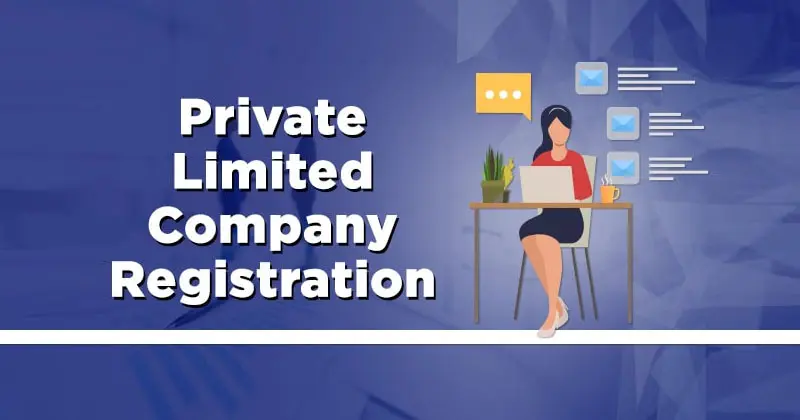Starting a business in India requires several formalities, and one of the key steps is registering your company. Whether you are looking to establish a Private Limited Company or any other type of business entity, understanding the necessary documents is crucial for a smooth and hassle-free registration process. In this blog, we will discuss the key documents required for company registration in India, specifically focusing on Private Limited Company Registration in India and Pvt Ltd Company Registration in India. We’ll also highlight the steps involved in how to register a company in India, how to register a startup company in India, and the convenience of company registration online in India.
1. Director’s Identity Proof (PAN Card and Passport)
One of the first requirements for Private Limited Company Registration in India is the identity proof of the directors. Directors are individuals who will manage and oversee the company’s operations. For this, the following documents are needed:
- PAN Card: A copy of the PAN card is mandatory for Indian directors.
- Passport: In case the director is a foreign national, a valid passport is required as identity proof.
These documents help establish the identity of the directors, ensuring that only trustworthy individuals are in charge of the company.
2. Proof of Address of Directors
The Pvt Ltd Company Registration in India process requires the submission of the address proof of the company’s directors. You can submit any of the following documents as address proof:
- Aadhar Card
- Voter ID Card
- Driving License
- Utility Bills: Recent utility bills like electricity or water bills (not older than 2 months)
- Bank Statement: A recent bank statement (also not older than 2 months)
This proof of address helps verify the residential address of each director and ensures compliance with the regulatory requirements for Company Registration in India.
3. Proof of Registered Office Address
For how to register a company in India, you must provide a valid address for the company’s registered office. This is the official location where all communications and notices from the government or legal authorities will be sent. You will need to submit the following documents:
- Utility Bill: A recent utility bill (electricity, water, or gas bill) in the name of the company’s owner or lessee.
- Rent Agreement: If the office is rented, a rental agreement signed by the property owner and the company.
- No Objection Certificate (NOC): If the office is rented, a No Objection Certificate from the landlord stating that the company can use the property as its office.
These documents are necessary to verify the authenticity of the company’s location and ensure that it operates from a legitimate space.
4. Memorandum of Association (MOA)
The Memorandum of Association (MOA) is a crucial legal document required for Company Registration in India. It defines the scope of the company’s activities, the business objectives, and the powers of the company. For Pvt Ltd Company Registration in India, the MOA needs to include:
- Name of the company
- Business activities or objects for which the company is being formed
- Registered office address
- Capital structure (authorized capital, paid-up capital)
- Liability clause (the extent of liability of the members)
The MOA helps the authorities understand the company’s business structure and objectives and forms a part of the company’s statutory documents.
5. Articles of Association (AOA)
The Articles of Association (AOA) is another essential document for Private Limited Company Registration in India. It lays down the rules and regulations that govern the internal management of the company. It includes provisions such as:
- Rights and duties of members
- Appointment of directors
- Board meetings and procedures
- Shareholder meetings
The AOA must align with the MOA and must be signed by all the directors and shareholders of the company.
6. Declaration by the Director(s)
A declaration by the directors confirming that they comply with all the requirements for Company Registration in India is required. This document is necessary to ensure that all legal formalities are met. The declaration will state that the directors are not disqualified from being appointed as directors under Indian law.
7. Company Name Approval
One of the first steps in the Company Registration Online in India process is to choose a unique name for your company. The name must adhere to the guidelines set by the Ministry of Corporate Affairs (MCA). You must submit an application for name approval. The name should not be similar to any existing company or trademark, and it must be distinctive.
To ensure that your company name is available for registration, it’s advised to conduct a trademark search and check for name availability on the MCA portal.
8. Shareholders’ Details
For how to register a startup company in India, a minimum of two shareholders are required. The shareholders must provide the following details:
- Personal Identification Proof: A copy of the PAN card or passport.
- Address Proof: Any of the documents mentioned earlier (like Aadhar, utility bills, etc.).
- Shareholding Pattern: The percentage of shares each shareholder will hold in the company.
This information is crucial for registering the company’s capital structure and ensuring that the shareholders’ rights are clearly defined.
9. Digital Signature Certificate (DSC)
In the online registration process, all documents must be signed digitally. The Digital Signature Certificate (DSC) is used to sign these documents electronically. Every director must have a DSC for Company Registration Online in India. The DSC must be obtained from a government-recognized certifying authority.
10. Incorporation Application (Form INC-32)
The Form INC-32 (SPICe Form) is the online application for registering a company. This form is used to submit the required details to the Ministry of Corporate Affairs (MCA) for approval. It integrates the application for name reservation, company incorporation, and allotment of the Director Identification Number (DIN).
The incorporation application can be submitted online through the MCA portal with all the necessary documents attached.
Conclusion
Registering a company in India involves various legal procedures, and understanding the key documents required is essential for smooth processing. Whether you are looking for Private Limited Company Registration in India, Pvt Ltd Company Registration in India, or how to register a startup company in India, the document requirements will remain similar. You will need to provide identity proofs, address proofs, the MOA, AOA, and other legal declarations to complete the registration.
The Company Registration Online in India process makes it easier for entrepreneurs to start their businesses quickly and efficiently. By having the right documents in place, you can avoid delays and ensure your company is legally established in India.
If you are unsure about the documentation or need assistance, consider consulting with a professional company registration consultant to guide you through the process and ensure compliance with all legal requirements.










